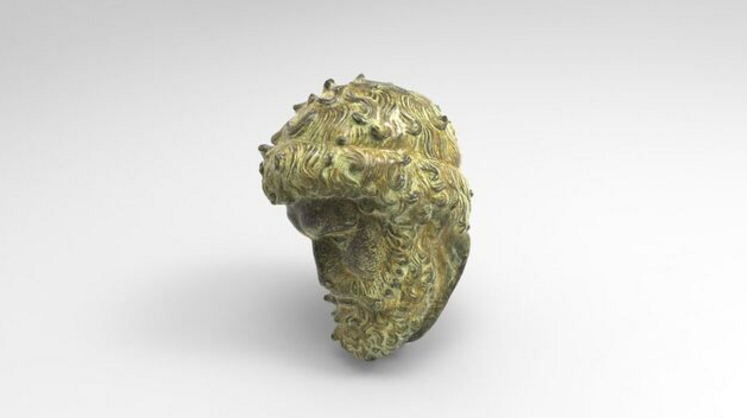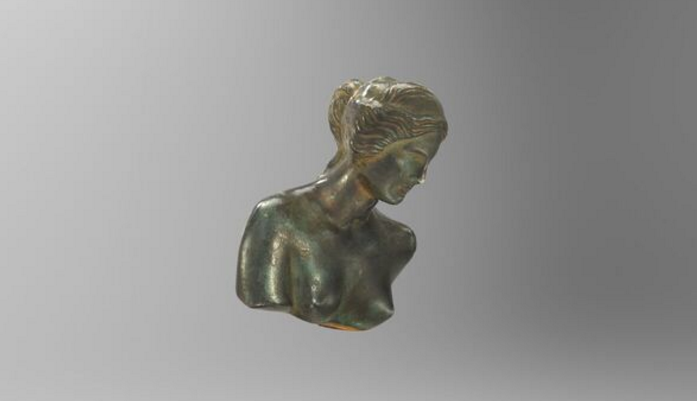Threeding & Artec 3D Team Up to Scan Hundreds of Greek Artifacts from Private Collection
 We tend to perk up whenever we hear that Threeding and Artec 3D have teamed up for a new project. This generally means we are about to be taken to a faraway land, with the potential to visit ancient cities and the relics they left behind, which are in need of preservation via archiving. From projects meant to preserve artifacts dating as far back as ancient Greece, Rome, and Thrace to creating 3D scans of Eastern Orthodox religious artifacts, we have with great interest been following what is definitely a dynamic duo of companies making a big–and innovative–difference in museum archiving.
We tend to perk up whenever we hear that Threeding and Artec 3D have teamed up for a new project. This generally means we are about to be taken to a faraway land, with the potential to visit ancient cities and the relics they left behind, which are in need of preservation via archiving. From projects meant to preserve artifacts dating as far back as ancient Greece, Rome, and Thrace to creating 3D scans of Eastern Orthodox religious artifacts, we have with great interest been following what is definitely a dynamic duo of companies making a big–and innovative–difference in museum archiving.
 Now, Threeding has announced that they are again working with Artec regarding ancient Greek artifacts, as they add a collection to their online platform. This historical preservation project will entail the 3D digitization of unique ancient Greek artifacts, using Artec’s high-resolution Spider and Eva scanners, along with their Artec Studio software. Artec is headquartered in Luxembourg, with offices in the US and Russia as well. They are the leaders in the handheld 3D scanner industry and have been involved in multiple projects with Threeding. All of the scans for this project will be available on Threeding for 3D printing by their community.
Now, Threeding has announced that they are again working with Artec regarding ancient Greek artifacts, as they add a collection to their online platform. This historical preservation project will entail the 3D digitization of unique ancient Greek artifacts, using Artec’s high-resolution Spider and Eva scanners, along with their Artec Studio software. Artec is headquartered in Luxembourg, with offices in the US and Russia as well. They are the leaders in the handheld 3D scanner industry and have been involved in multiple projects with Threeding. All of the scans for this project will be available on Threeding for 3D printing by their community.
“We’re honored to once again be the 3D scanning partner of choice for Threeding’s restoration projects,” said Artyom Yukhin, president and CEO of Artec 3D. “The capture of ancient relics is delicate work, requiring tools that can operate quickly, efficiently, and precisely. Using our lightweight handheld 3D scanners and advanced software platform, Threeding has been able to add even more value to its impressive historical collection.”
Threeding will also be collaborating with Mr. Krasimir Todorov, a famous artist in his own right, and the inventor of ZN ART, who supported Threeding’s team throughout the restoration process. These artifacts are actually being scanned from part of a private collection (requested to remain undisclosed by the owner), and hundreds of artifacts will be made available. Many of the pieces are from different periods of history, and members will be able to download and print items like sculptures, busts, and more. This is a great way to experience ancient history, and Threeding even suggests the idea of 3D printing enough models to create your own small ‘home museum.’
“Creating this collection of 3D printing models of Ancient Greek artifacts is a milestone for us,” commented Cveta-Maria Partaleva, co-founder of Threeding. “Although we already had fantastic ancient artifacts in 3D printing format from our other museum projects, these relics have tremendous meaning for human history and will make Threeding a desirable partner of all museums and collectors who are looking to present their artifacts in a 3D printing friendly manner.”
Models such as Venus of Milos, the Head of Hygeia, the Head of Zeus, and more, are currently available for download. The collection is to be made available as a 3D object made of sheet material through ZN Art, ‘an original technology based on invention and computer hardware.’
“Soon a ZN ART portal will be opened, which will enable obtaining ZNART space models (puzzles),” says Krasi Todorov, author of ZNART – Museum from Paper, a regional history museum, and the first of its kind that reveals ‘the next level of human development and acquirement of civilization knowledge.’
“This is a new option for systematic space training and modeling in which each one of us is an author,” says Todorov. “Unlike the ready 3D printed model, ZNART has a constructive system with content that allows harmonious creation by the author – client of space objects made of sheet material with high quality.”
Threeding is now the largest repository for 3D printable historical artifacts. After the successful completion of this project, there will be more than 1000 museum objects available for sale in a 3D printing-friendly format, all to be found at their 3D printing marketplace which was founded in 2013 by a group of students from the Bulgarian National Academy of Art. They are the only marketplace of their kind, offering 3D printable models of historical artifacts. Discuss this story in the Greek Artifact forum thread on 3DPB.com.
Subscribe to Our Email Newsletter
Stay up-to-date on all the latest news from the 3D printing industry and receive information and offers from third party vendors.
Print Services
Upload your 3D Models and get them printed quickly and efficiently.
You May Also Like
Nikon SLM Solutions Partners with ATI and Bechtel Plant Machinery on 3D Printed Hypersonics
One of the world’s most demanding technical challenges is the creation of maneuverable hypersonic vehicles. The country that does so well will command the ultimate high ground. They will essentially...
3D Printing Financials: Velo3D Looks to Bounce Back with Defense Deals
Velo3D (OTCQX: VLDX) is working hard to get back on track. The metal 3D printing company brought in $9.3 million in revenue during the first quarter of 2025, slightly below...
3D Printing Financials: Stratasys Kicks Off 2025 with Fresh Cash and a Tight Grip on Strategy
Stratasys (Nasdaq: SSYS) started the year with strong momentum, adding fresh cash to its balance sheet and achieving profitability on an adjusted basis. The company also gained a new investor,...
Chaos & Opportunity
Great fortunes are lost and won amidst quicksand. When well-trodden paths turn to labyrinths, the concrete is sublimated into morass, sunshine turns to hail, and 20/20 vision becomes blindness; new...
































